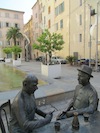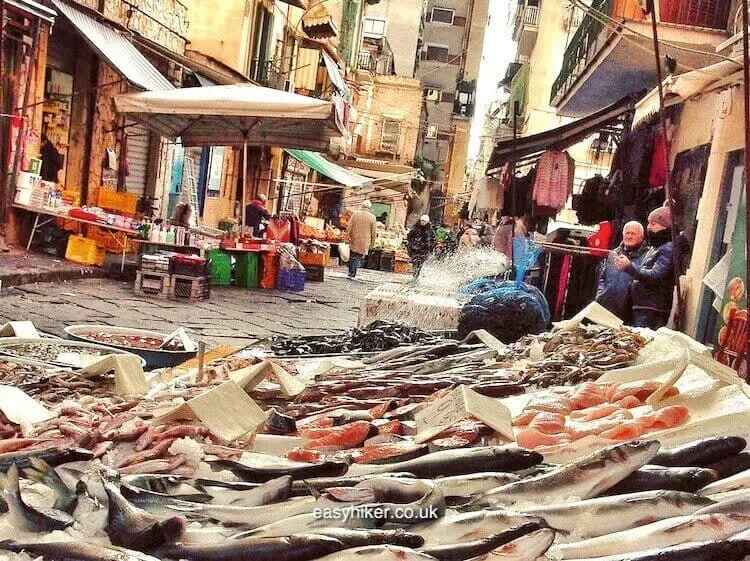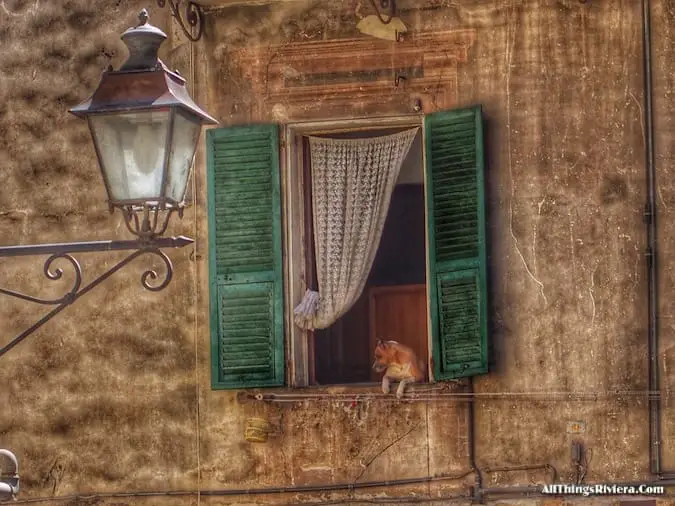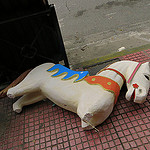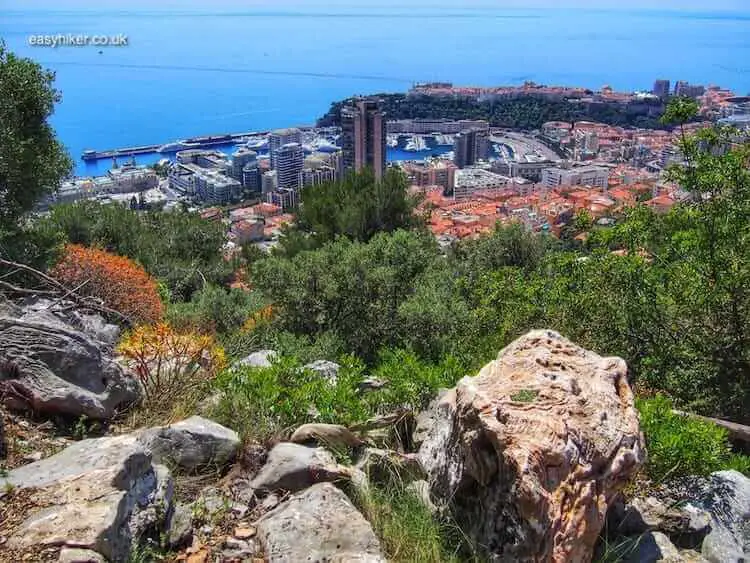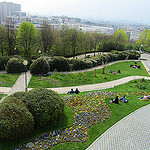Our latest trip to Rome was the 4th time we visited the city. We went first in the mid-1980s when the world was a different place: the Iron Age of the modern world.
Many things have changed since then, but the Eternal City is not one of them. Which, after all, is why it bears its name: four decades, it seems, are little more than fly dirt on a calendar that stretches over a period of 2500 years.

Easy Hiker, by contrast, is a relatively young concern, and having been around for its entire life span, I can confidently state that it has changed considerably over the years. Some of our old posts cover multi-day hikes and day trips where we walked for 10 miles and more.
Our focus has changed since then – not only because we became older and lazier but also because we began to think things through. Was it really a smart investment of our time to travel for hours and hundreds of kilometres with the purpose of trudging through a forest that was not dramatically different from one that we could find in front of our doorstep?
If Thoreau was right in saying that “it is not worth travelling half way around the world to count the cats in Zanzibar”, it is certainly not worth doing so to count the conifers in a Mediterranean landscape either.
This is one reason why our more recent walks have become not only shorter but also – well, some might say, wackier, although I prefer the term “more idiosyncratic”.
We no longer routinely search out woods and lakes in our destinations but look for things that cannot be found anywhere else: whatever it is that makes the place we visit the place that it is. If we can find this in nature: so much the better, but we have become increasingly at ease with the idea that urban is also fine.
This week and next, we are offering you two walks in Rome that, seen in conjunction, manage to combine the urban and the natural, starting today with the Passegiata del Gianicolo, often referred to as “the most scenic walk in Rome”.

The Gianicolo on the southern outskirts of the city (in antiquity known as the Janiculum) is considered the 8th hill of Rome. Other than most of the “Magnificent 7”, it is a proper hill that offers splendid views across the city – which, since we are in Italy, are preferably served together with a light snack or a cup of coffee.

Like most of Italy’s outdoor experiences, the Passegiata never strays far from civilization. Moments of pure nature are therefore rare, but you will be compensated by panoramic views of cultured gardens …

… and charming finds along the way – such as the Gianicolo Lighthouse, which is in fact not a lighthouse at all (the coast is 20 kilometres away) but a monument erected by members of the Italian community in Argentina to express their undying loyalty to the motherland.

Monuments also constitute the centerpiece of the most scenic walk in Rome. It was here on the Gianicolo where the decisive battle in the Siege of Rome was fought, Giuseppe Garibaldi orchestrating the – ultimately doomed – attempt to defend the young Republic against a coalition of the Pope and the French Emperor Napoleon III.
The most striking of these monuments is the equestrian statue of Italy’s national hero himself, the Che Guevara of the 19th century, which was facing the city for 30 years before it was turned around at the request of the Pope.
Pius XI only signed the Lateran Treaty of 1929 (in which the Vatican gave up its last hold on temporal power over the city) under the condition that the declared enemy of the Holy See would henceforth cease to look down on Rome as though in triumph.

Near-by, you will also find a statue of Garibaldi’s wife Anita, the Bonnie to Giuseppe’s Clyde and an even more glamorously ferocious revolutionary than her husband. Fittingly, the style of the statue can probably be best described as “Anita Get Your Gun”.
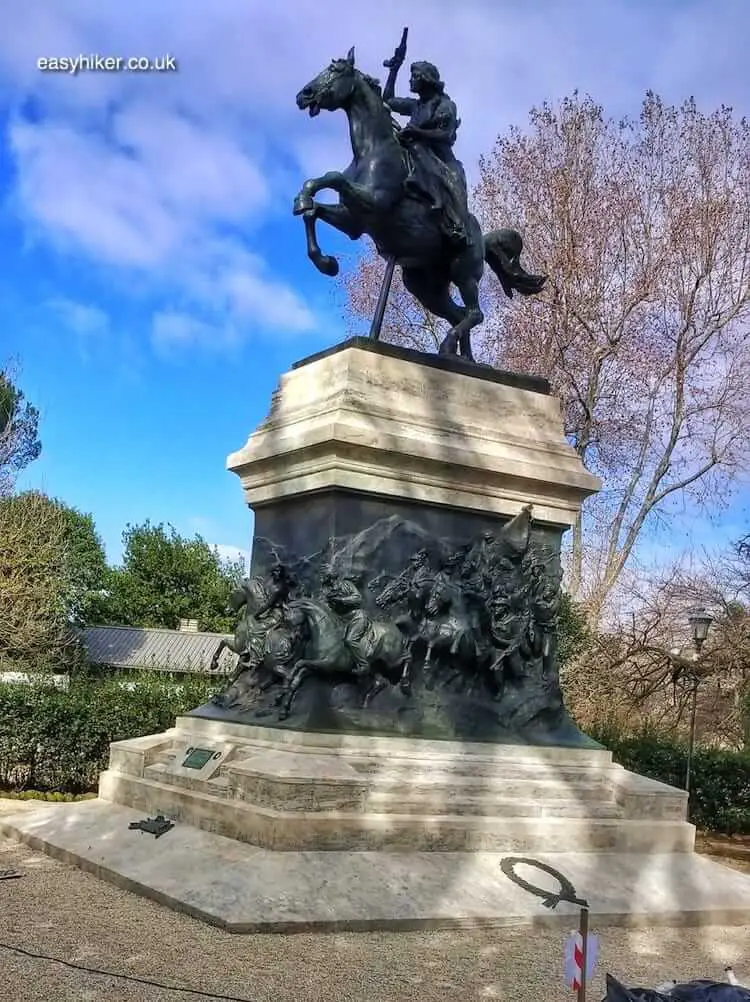
Anita married Garibaldi in her native Brazil, having met him when they fought side-by-side in an uprising against the Imperial government.
In the battle of Curitibanos, Anita was taken prisoner, but when her guards were distracted for a moment, she stole a horse and galloped away. The soldiers rode after her in hot pursuit and managed to shoot her horse dead but gave up the chase when Anita fled on foot into a tropical swamp, believing that she could never survive in such a hostile environment.
Survive, however, she did, having roamed around for days without food and clean drinking water, eventually to be reunited with her husband. And here is the punch line: she did all of that while six months pregnant. What a lady!
Most of the statues on the Gianicolo were erected to commemorate citizens whose lives may have been less colourful but who nevertheless played important parts in the process of Italian unification.
The nucleus of the collection of busts on either side of the Garibaldi Monument was commissioned by the short-lived Republic of Rome, but the original 52 statuettes were put in storage when the papal government was re-installed.
Following unification, the collection went on display on the Gianicolo together with busts that had been newly commissioned for the purpose.
Today, a total of 84 busts line the Passegiata. You can count them if you don’t believe me and if you think that it is worth travelling half way around the world to count the busts on the Janiculum.

This tribute to Italy’s “heroic patriots” is the oldest section of the Gianicolo’s memory lane: the Garibaldi Monument was erected in 1897, the statue of Anita in 1932.
Older than any of these statues is the Villa Lante which stands in the middle of them. It was built in 1520 by Giulio Romano, a student of the painter Raphael, on the ruins of an even older residence that was inhabited by the poet Martial in the 1st century AD.
Today, the Villa Lante serves as Finland’s embassy to the Vatican.

Other highlights of the Passegiata include the Fontana dell’Acqua Paola, built in the 17th century to celebrate the restoration of Rome’s water supply system …
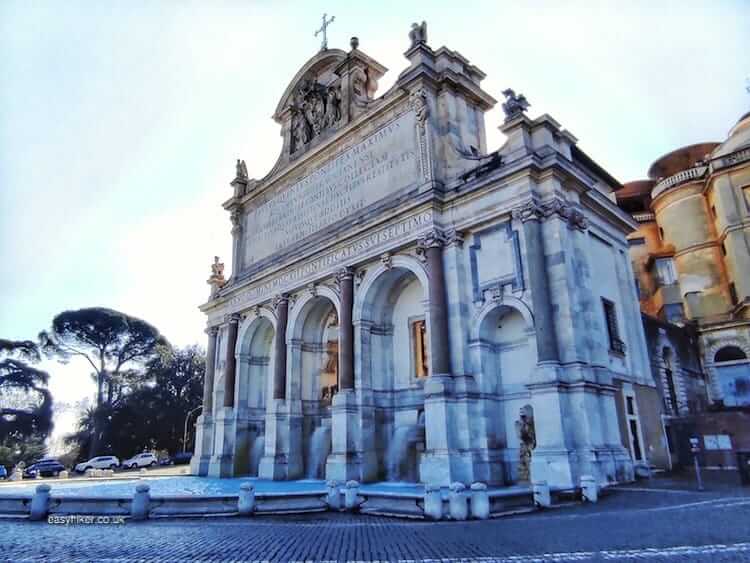
… and the descent into the quarter of Trastevere at the very end.
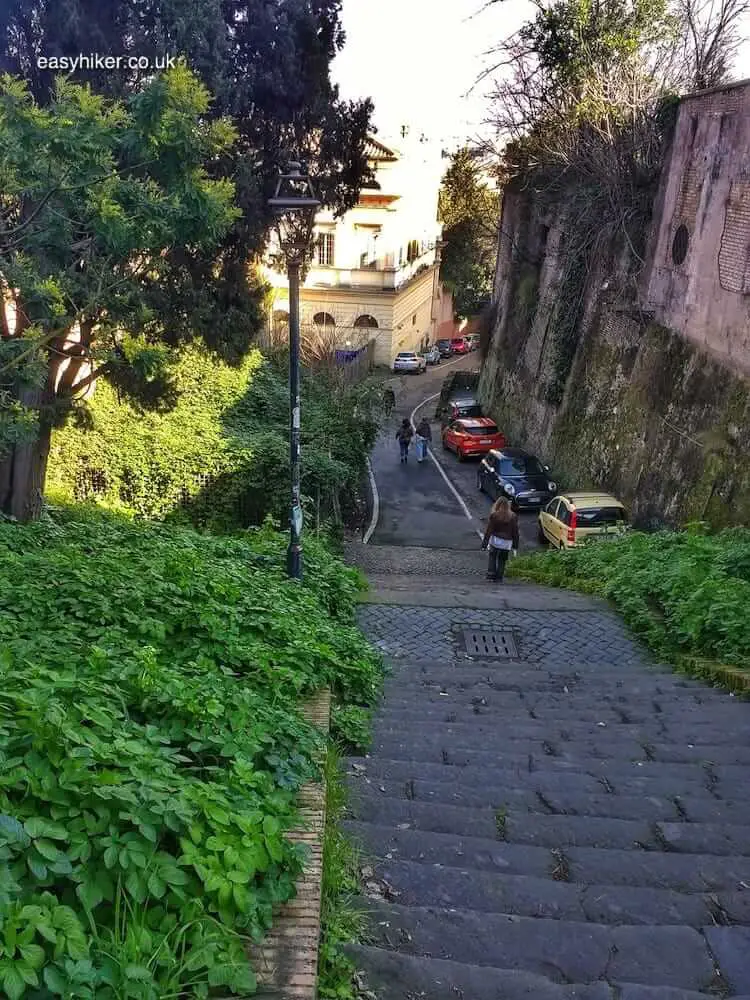
Once you are here already, you should not miss this perfect opportunity of giving Trastevere a closer look. It is one of Rome’s most picturesque quarters and has everything that you expect to find in Italy: the street theatre of movement and life, the street furniture, the colours, the romantically disheveled alleyways …
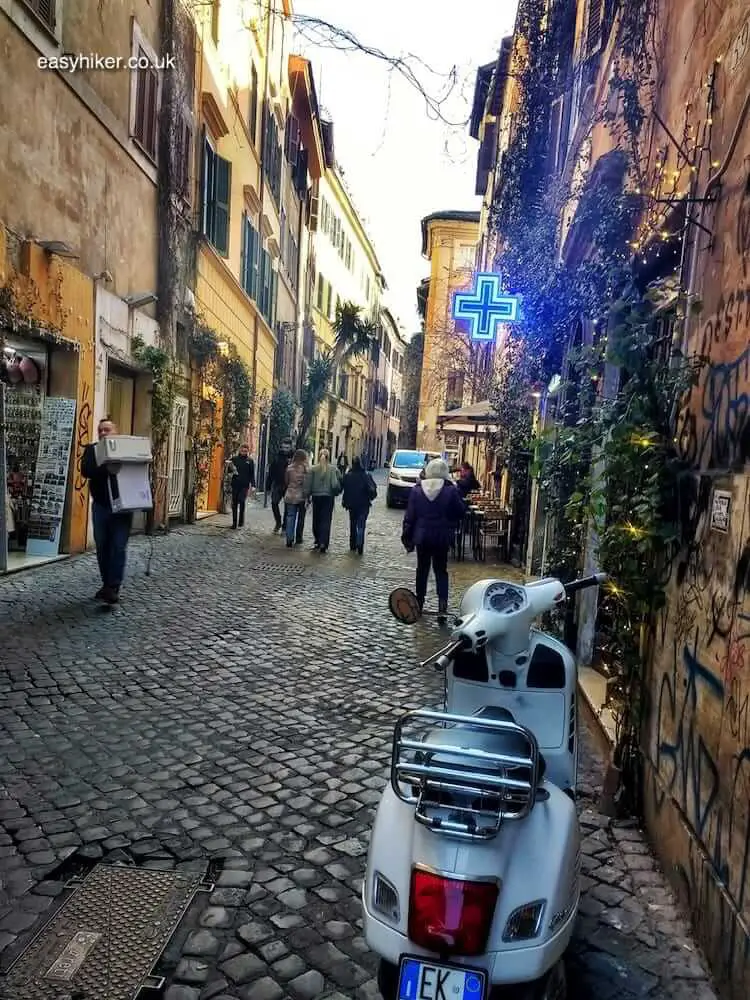
… and great restaurants, concentrated in the areas near two of the bridges that connect Trastevere to the city, the Piazza del Ponziani near the Ponte Palatino in the east and Piazza Trilussa at the foot of the Ponte Sisto a little further upstream.
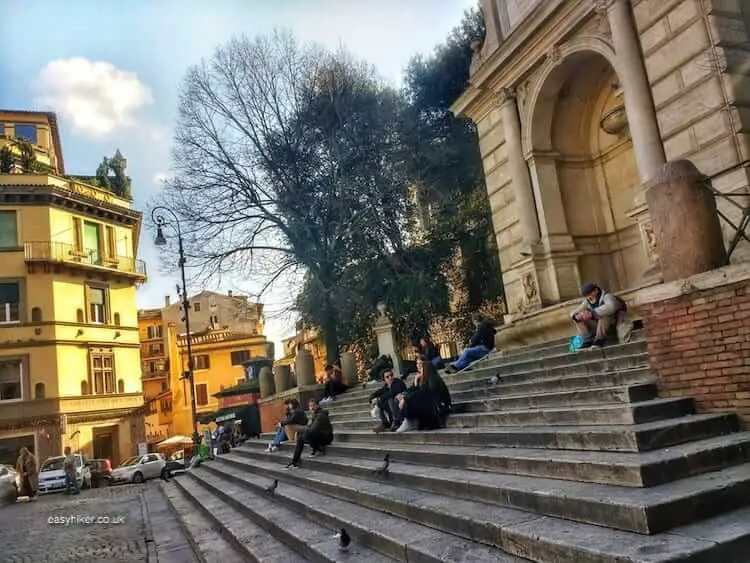
Trastevere is the place in Rome to eat, and reason enough for even the snootiest of Roman citizens to make their way “across the Tiber”, the literal meaning of Trastevere. There is also quite a lot to see there. For a comprehensive overview, we suggest you go here. (The article is in German but you can right-click on the text and let Google translate everything into English.)
The Passegiata del Gianicolo starts in the south of the Piazza delle Rovere and can be most easily accessed from the Ponte Principe Amedeo. On the Trastevere side of the bridge, just walk up the ramp on the left hand side and follow the street – it is already called Via del Gianicolo – until you reach the Piazza dell Sant’Onofrio. This is where the Passegiata starts.
The walk is short (just over an hour) and probably works best in combination with an even shorter, more urban, and, well, wackier walk – but more about that next week.


